- Cultivating Hyacinths in Your Garden
- Choose the Right Location
- Prepare the Soil
- Planting Hyacinth Bulbs
- Maintenance
- Overwintering
- Tips for Growing Hyacinths in Your Garden
- Choosing the Right Hyacinth Varieties
- Fragrance
- Color
- Growth Habit
- Forcing or Naturalizing
- Other Considerations
- Hyacinth Color Selection
- 1. Purple
- 2. Pink
- 3. White
- 4. Blue
- 5. Yellow
- 6. Mixed Colors
- When and How to Plant Hyacinths
- Planting Time
- Choosing a Location
- Preparing the Soil
- Planting Depth
- Planting Technique
- Care and Maintenance
- Hyacinth Care and Maintenance
- 1. Planting Hyacinths
- 2. Watering
- 3. Fertilizing
- 4. Mulching
- 5. Deadheading
- 6. Staking
- 7. Winter Care
- Common Pests and Diseases of Hyacinths
- Pests:
- Diseases:
- Tips for Prevention and Treatment:
- Harvesting and Storing Hyacinth Bulbs
- Harvesting
- Curing and Drying
- Storing
- Questions and Answers:
- What is a hyacinth?
- How do you grow hyacinths in the garden?
- What are the different types of hyacinths?
- What are some popular hyacinth varieties?
- Can hyacinths be grown indoors?
- How long do hyacinths bloom?
- Videos: How to Grow Hyacinths and Paperwhites (Part 2) | Forcing Indoor Hyacinths and Paperwhites
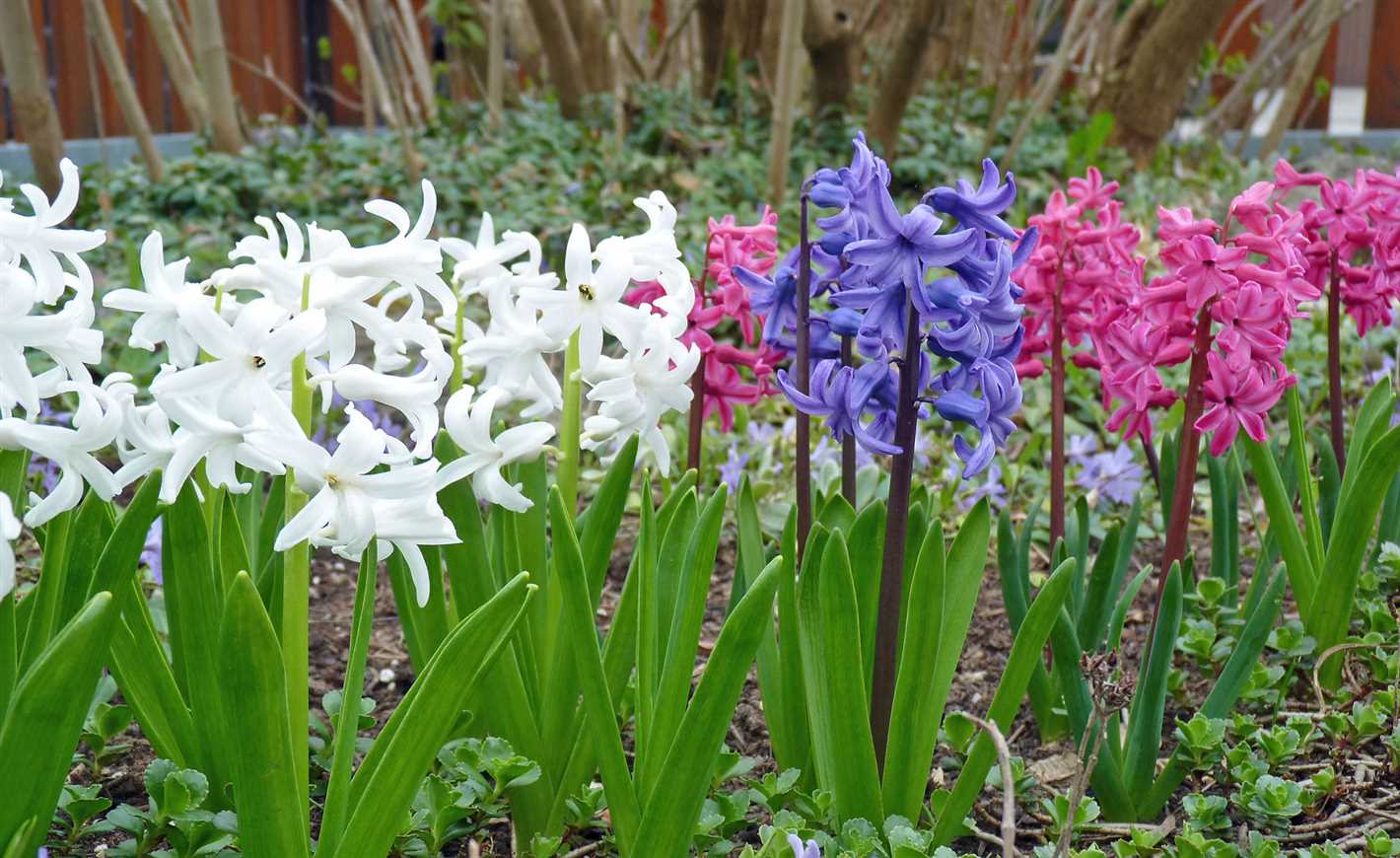
Hyacinths are beautiful flowering plants that are a favorite among gardeners. Known for their vibrant colors and sweet fragrance, hyacinths are a popular choice for adding a burst of color to any garden.
These spring-blooming bulbs are relatively easy to grow and can be planted in beds, borders, or containers. They thrive in well-drained soil and prefer a sunny or lightly shaded spot in the garden. Hyacinths are also excellent for forcing indoors, allowing you to enjoy their beauty and scent even during the winter months.
There are several different types and varieties of hyacinths to choose from, each with its own unique characteristics. Some popular varieties include the “Blue Jacket,” which features deep blue florets, and the “White Pearl,” which has pure white flowers. Other varieties come in shades of pink, purple, and yellow, offering a wide range of options for adding color to your garden.
Whether you’re a seasoned gardener or just starting out, hyacinths are a great choice for adding beauty and fragrance to your outdoor space. With their wide variety of colors and easy care requirements, hyacinths are sure to be a highlight of any garden.
Cultivating Hyacinths in Your Garden
Hyacinths are beautiful and fragrant flowers that can add a burst of color to your garden. Cultivating hyacinths is relatively easy and can be a rewarding experience. Here are some tips on how to successfully grow hyacinths in your garden:
Choose the Right Location
- Hyacinths prefer a sunny spot with well-draining soil.
- Make sure the location receives at least 6 hours of direct sunlight each day.
- Avoid planting hyacinths in areas that are prone to waterlogging, as excessive moisture can cause the bulbs to rot.
Prepare the Soil
- Before planting hyacinths, prepare the soil by removing any weeds and loosening it with a garden fork.
- Add organic matter, such as compost or well-rotted manure, to improve the soil’s fertility and drainage.
- Hyacinths prefer slightly acidic to neutral soil pH levels.
Planting Hyacinth Bulbs
- Plant hyacinth bulbs in the fall, around 4-6 weeks before the first frost.
- Choose bulbs that are firm and free from any mold or mushy spots.
- Dig a hole that is 4-6 inches deep and place the bulb in the hole, pointed end up.
- Space the bulbs about 4-6 inches apart.
- Cover the bulbs with soil and gently firm it down.
Maintenance
- Water the hyacinth bulbs immediately after planting.
- Keep the soil moist, but not waterlogged, throughout the growing season.
- Apply a balanced fertilizer in early spring, when the shoots start to emerge.
- Remove any faded flowers to encourage more blooms.
Overwintering
- After the foliage turns yellow and dies back naturally, stop watering the hyacinths.
- Leave the bulbs in the ground over winter, as they require a period of cold dormancy.
- Protect the bulbs from excessive moisture by ensuring good drainage.
- In areas with severe winters, you may need to mulch the soil around the bulbs to insulate them.
By following these tips, you can successfully cultivate hyacinths in your garden and enjoy their beauty and fragrance year after year.
Tips for Growing Hyacinths in Your Garden
- Choose a Sunny Spot: Hyacinths thrive in full sun, so choose a location in your garden that gets at least 6-8 hours of direct sunlight each day.
- Prepare the Soil: Hyacinths prefer well-draining soil, so it’s important to amend heavy clay soils with organic matter like compost or well-rotted manure. This will help improve drainage and fertility.
- Planting Depth: Dig a hole that is about 6-8 inches deep. Place the hyacinth bulb in the hole with the pointed side facing up. Cover the bulb with soil and gently firm it down.
- Spacing: Space the hyacinth bulbs about 6 inches apart to allow for proper air circulation and growth.
- Watering: After planting, water the bulbs thoroughly to settle the soil and promote root growth. During the growing season, water regularly, keeping the soil evenly moist but not waterlogged.
- Fertilizing: Hyacinths don’t typically require a lot of fertilizer. However, you can apply a slow-release bulb fertilizer at planting time to provide nutrients throughout the growing season.
- Deadheading: Remove spent flowers to encourage the plant to focus its energy on bulb development rather than seed production.
- Winter Care: After the foliage has died back naturally, you can cut it back to ground level. Mulch the area with a layer of straw or leaves to protect the bulbs from frost and extreme temperatures.
- Dividing and Replanting: Hyacinth bulbs can be lifted and divided every 3-4 years to prevent overcrowding and improve blooming. Wait until the foliage has completely yellowed before lifting the bulbs.
- Enjoying Cut Flowers: If you want to bring hyacinths indoors, cut the stems when the flowers are just starting to open. Remove any leaves that will be below the water line and place the cut stems in a vase with fresh water.
Choosing the Right Hyacinth Varieties
When it comes to choosing hyacinth varieties for your garden, there are several factors to consider. From colors to fragrance, there is a wide range of options available. Here are some tips to help you select the right hyacinth varieties for your garden:
Fragrance
One of the standout features of hyacinths is their beautiful fragrance. Different hyacinth varieties have distinct fragrances, ranging from sweet and floral to spicy and musky. Consider the type of fragrance you prefer and choose varieties accordingly. Some popular fragrant hyacinth varieties include ‘Delft Blue,’ ‘City of Haarlem,’ and ‘L’Innocence.’
Color
Hyacinths come in a wide array of colors, including shades of purple, pink, blue, white, and yellow. Consider the color scheme of your garden and select hyacinth varieties that complement it. You may also choose to create a visually striking display by planting different colored hyacinths together. Some popular colorful hyacinth varieties include ‘Jan Bos,’ ‘Woodstock,’ and ‘Blue Jacket.’
Growth Habit
Hyacinth varieties can differ in their growth habit, with some having shorter and more compact blooms while others produce tall and stately flower spikes. Consider the desired height and overall appearance of your garden when selecting hyacinth varieties. Some compact hyacinth varieties include ‘Carnegie,’ ‘Pink Pearl,’ and ‘Blue Festival,’ while taller varieties include ‘Anna Marie,’ ‘City of Haarlem,’ and ‘Gypsy Queen.’
Forcing or Naturalizing
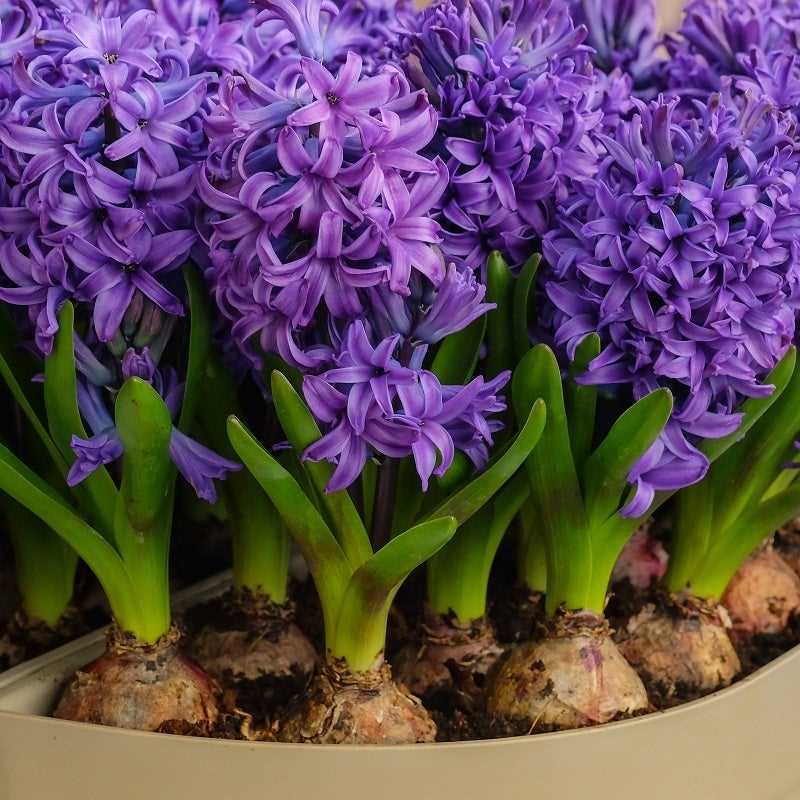

Hyacinths can be grown both indoors and outdoors. If you plan to force the bulbs indoors to enjoy early blooms, select varieties that are suitable for forcing. These varieties are often labeled as such and have been specially treated to bloom earlier. On the other hand, if you want hyacinths to naturalize in your garden and come back year after year, choose varieties that are known for their ability to naturalize, such as ‘Peter Stuyvesant,’ ‘Carnegie,’ and ‘City of Haarlem.’
Other Considerations
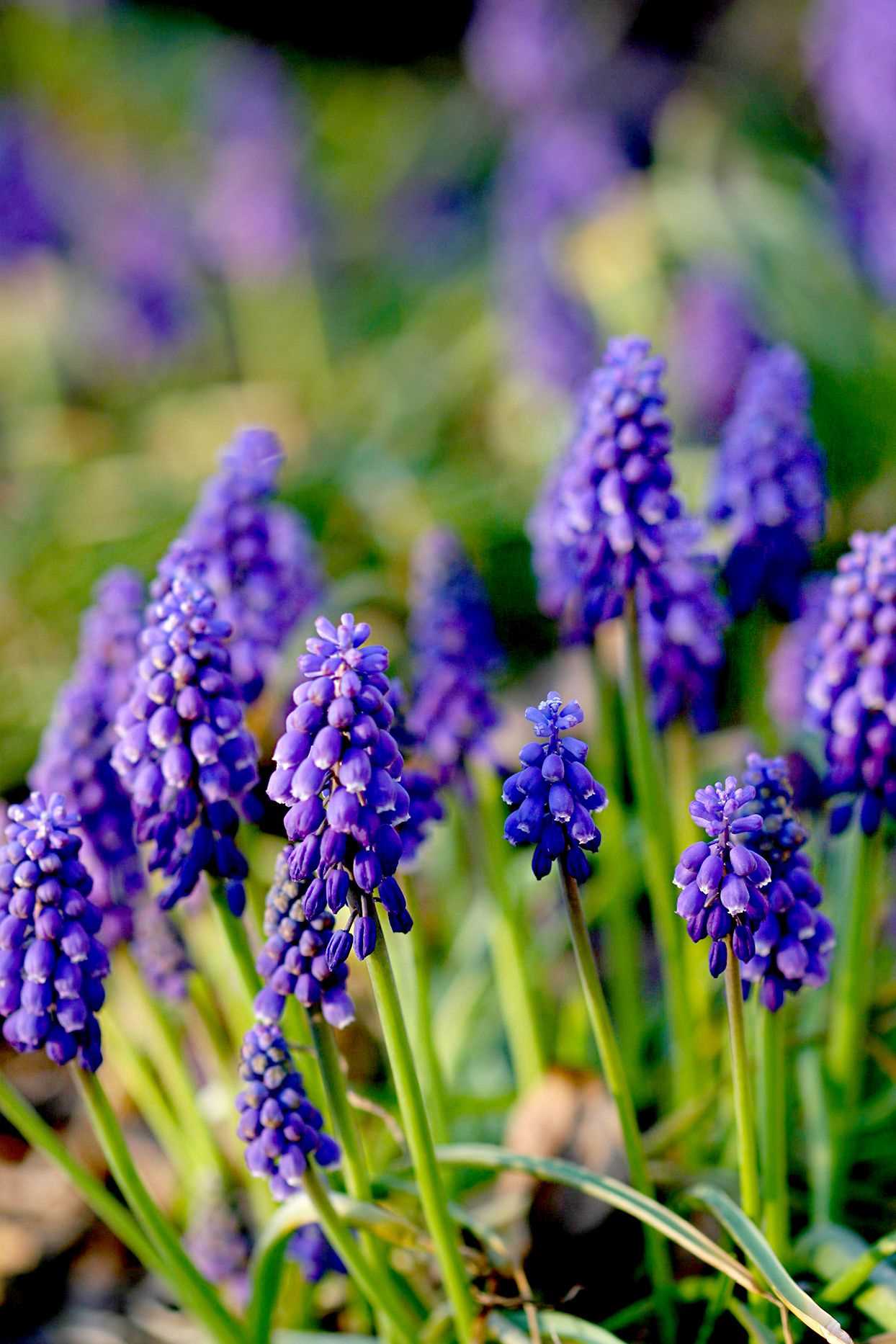

In addition to fragrance, color, growth habit, and intended use, other factors to consider when choosing hyacinth varieties include hardiness zone, bloom time, and bulb size. Check the hardiness zone of the variety to ensure it is suitable for your location. Consider the bloom time to create a continuous display of hyacinth blooms throughout the spring season. Lastly, choose bulb sizes based on your planting preferences, with larger bulbs typically producing larger and more vigorous blooms.
By considering these factors, you can select the right hyacinth varieties to create a stunning and fragrant display in your garden.
Hyacinth Color Selection
Hyacinths are known for their vibrant and colorful flowers, making them a popular choice for gardeners. They come in a wide range of colors, allowing you to create stunning displays in your garden. Here are some popular hyacinth colors to consider:
1. Purple
Purple hyacinths are a classic choice and are known for their rich and deep color. They can add a touch of elegance and sophistication to any garden.
2. Pink
Pink hyacinths are a romantic and delicate option. They can create a soft and dreamy atmosphere in your garden. Pink hyacinths are often associated with love, making them a perfect choice for a special occasion.
3. White
White hyacinths are pure and timeless. They can bring a sense of purity and innocence to your garden. White hyacinths can also act as a neutral backdrop, allowing other flowers to shine.
4. Blue
Blue hyacinths are refreshing and calming. They can create a cool and serene ambiance in your garden. Blue hyacinths are a popular choice for creating a peaceful and tranquil outdoor space.
5. Yellow
Yellow hyacinths are bright and cheerful. They can add a pop of sunshine to your garden, especially when planted among other colorful flowers. Yellow hyacinths are perfect for creating a vibrant and energetic atmosphere.
6. Mixed Colors
If you can’t decide on a single color, you can opt for mixed color hyacinths. These varieties come in a mix of different colors, creating a stunning and diverse display in your garden. Mixed color hyacinths can be a great choice for adding variety and visual interest to your outdoor space.
When selecting hyacinth colors, consider the overall color palette of your garden and the mood you want to create. You can also experiment with different color combinations to create unique and eye-catching displays.
When and How to Plant Hyacinths
Hyacinths are beautiful and fragrant spring flowers that can bring vibrant color to any garden. If you want to enjoy these lovely blooms in your own garden, it is important to know when and how to plant hyacinths. Here are some tips to help you get started.
Planting Time
The best time to plant hyacinths is in the fall, preferably about 6-8 weeks before the ground freezes. This gives the bulbs enough time to establish roots before the winter. In areas with mild winters, you can also plant hyacinth bulbs in late winter for early spring blooms.
Choosing a Location
Hyacinths thrive in full sun or partial shade, so choose a location in your garden that receives at least 6 hours of direct sunlight each day. Make sure the soil is well-draining to prevent waterlogging, as excess moisture can cause the bulbs to rot.
Preparing the Soil
Before planting, prepare the soil by removing any weeds and breaking up clumps. Hyacinths prefer fertile soil with a pH level between 6 and 7. If your soil is too acidic, you can add lime to raise the pH level. Alternatively, if the soil is too alkaline, you can add sulfur to lower the pH level.
Planting Depth
When planting hyacinths, dig a hole that is about 4-6 inches deep. Place the bulb in the hole with the pointed end facing upwards. Space the bulbs about 4-6 inches apart to allow for proper growth and airflow.
Planting Technique
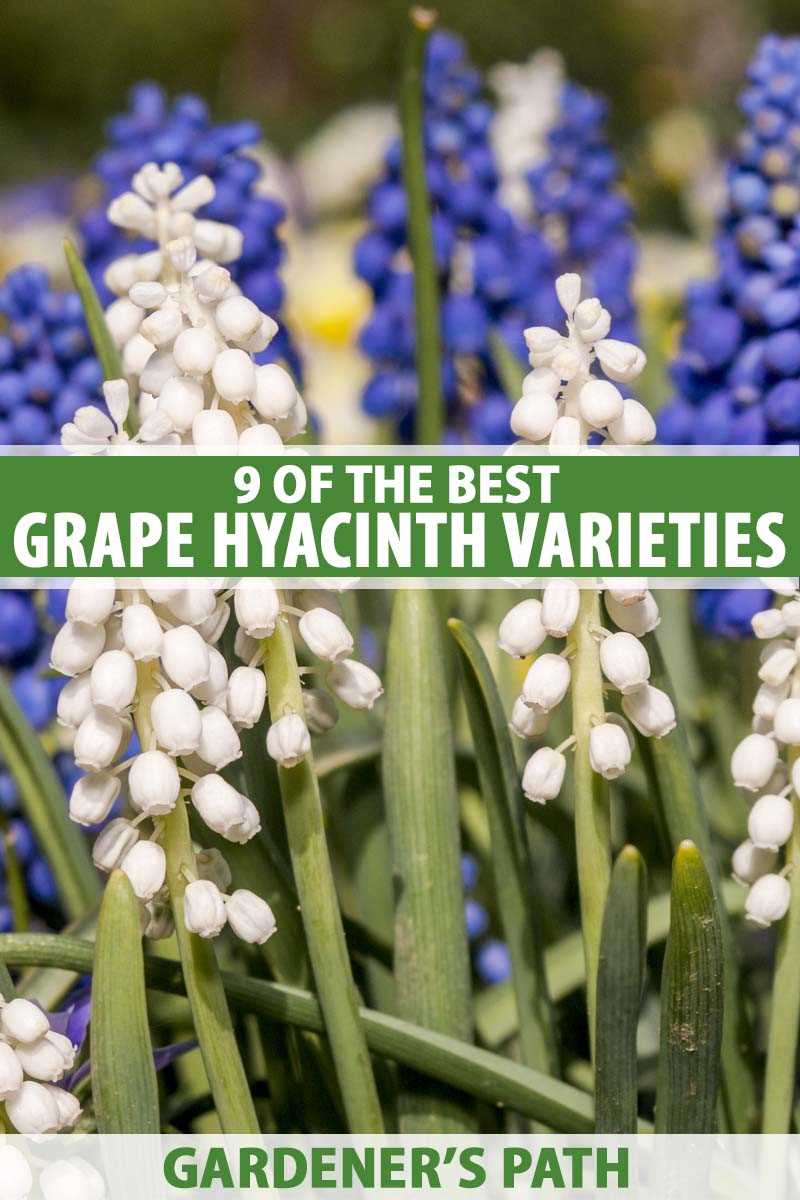

After placing the bulbs in the holes, cover them with soil and gently press it down to ensure good contact with the bulbs. Water the area thoroughly to settle the soil and provide moisture to the bulbs.
Care and Maintenance
Once planted, hyacinths require minimal care. Water the bulbs regularly, especially during dry spells, to keep the soil moist but not waterlogged. Apply a layer of mulch around the plants to help conserve moisture and control weeds. In late spring, remove the faded flowers to prevent seed production and redirect the plant’s energy towards bulb development.
With proper planting and care, hyacinths can grace your garden with their stunning blooms and delightful fragrance year after year. So, why not add some hyacinths to your garden and enjoy the beauty of spring?
Hyacinth Care and Maintenance
1. Planting Hyacinths
Hyacinths should be planted in well-draining soil to prevent root rot. Choose a sunny location in your garden where the soil is fertile and moist. Hyacinth bulbs should be planted in the fall, around 4-6 weeks before the ground freezes.
- Choose healthy bulbs with no signs of damage or decay.
- Dig a hole about 6-8 inches deep.
- Place the bulb in the hole, pointy end up.
- Cover the bulb with soil and gently firm it down.
2. Watering
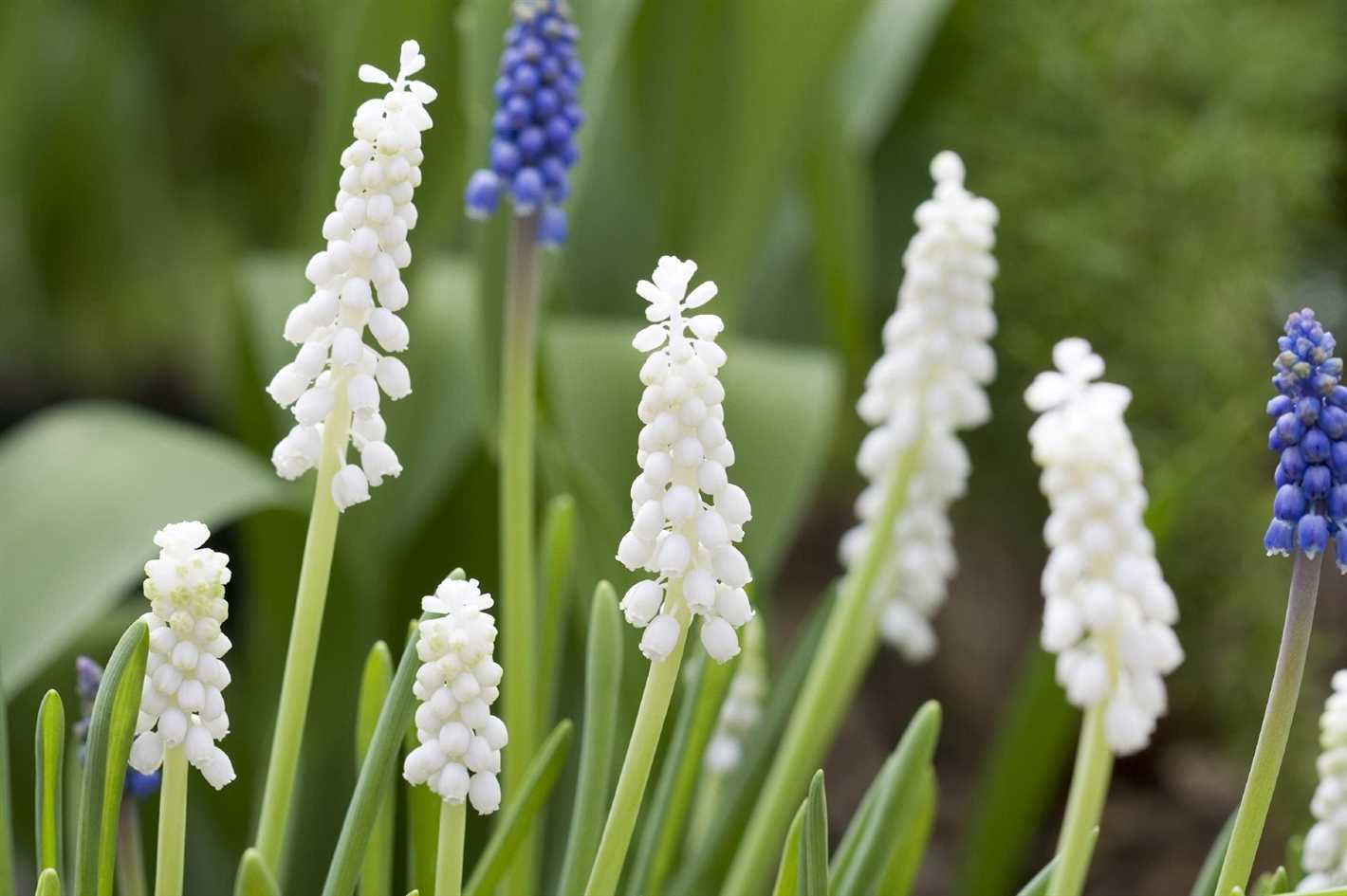

Hyacinths require regular watering, especially during dry periods. Keep the soil evenly moist, but not soaked. Avoid overwatering, as it can cause the bulbs to rot.
3. Fertilizing
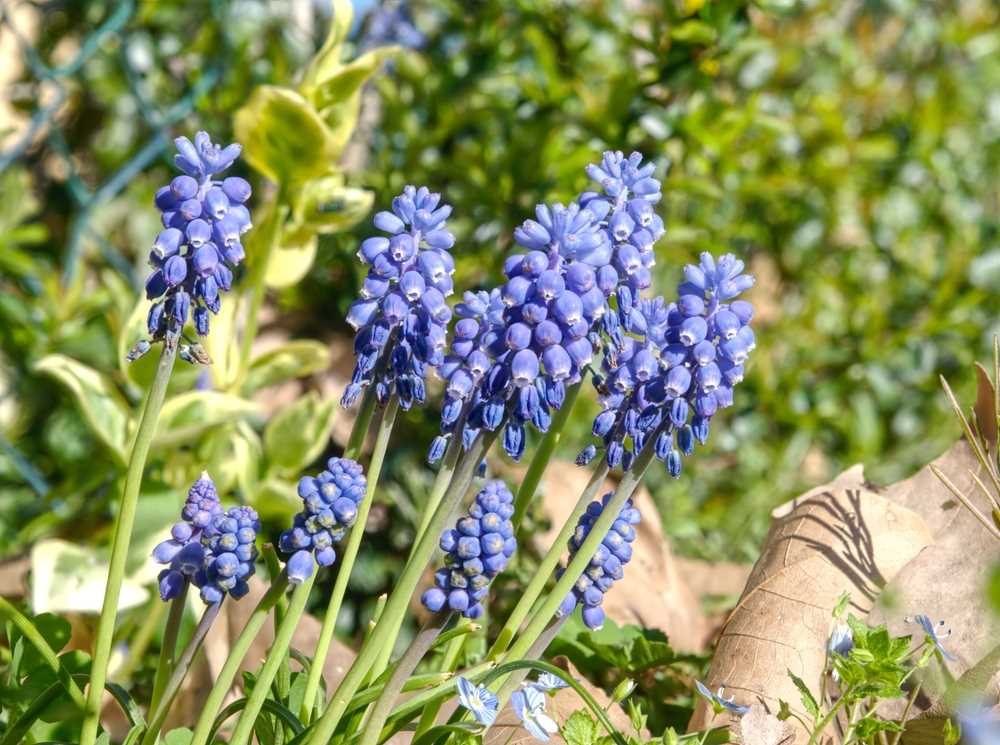

Apply a balanced fertilizer, such as a 10-10-10 formula, in early spring when the shoots begin to emerge. Follow the instructions on the fertilizer packaging for the correct dosage.
4. Mulching
Apply a layer of organic mulch, such as compost or shredded leaves, around the base of the hyacinth plants. This will help retain moisture, suppress weeds, and improve the soil’s fertility.
5. Deadheading
Remove faded flowers by cutting the stalk just above the base of the plant. This will prevent seed production and encourage the plant to put its energy into bulb development.
6. Staking
If your hyacinth plants become top-heavy and start to lean, you can stake them to provide support. Use bamboo stakes or plant rings and gently tie the stems to the stake or ring with soft twine.
7. Winter Care
After the hyacinth blooms have faded, allow the foliage to yellow and wither naturally. This allows the plant to store energy in the bulb for next year’s growth. Avoid removing the leaves prematurely. In colder climates, you may need to cover the bulbs with a layer of mulch to protect them from freezing temperatures.
Common Pests and Diseases of Hyacinths
Hyacinths are generally a hardy flower, but they can be susceptible to certain pests and diseases. It is important to be aware of these issues in order to maintain the health and beauty of your hyacinth plants. Here are some common pests and diseases that can affect hyacinths:
Pests:
- Aphids: These small insects feed on the sap of the plant and can cause deformity and stunted growth. They can be controlled by spraying the plants with water or an insecticidal soap.
- Snails and Slugs: These pests can devour foliage and flowers, leaving behind a slimy trail. To reduce their population, you can handpick them or use organic slug and snail bait.
- Hyacinth Bulb Fly: The larvae of this fly can damage the bulbs by feeding on them. To prevent infestation, inspect bulbs before planting and destroy any infected ones. You can also use a fine netting or fleece to protect the bulbs.
Diseases:
- Botrytis Blight: This fungal disease can cause gray mold on the leaves and flowers. Remove infected parts and ensure good air circulation to prevent its spread. Fungicidal sprays can also be used to control the disease.
- Basal Rot: This disease affects the basal plate of the bulb, causing it to rot and eventually killing the plant. Overwatering and poor drainage can encourage its development. To prevent basal rot, plant bulbs in well-draining soil and avoid excessive watering.
- Virus Diseases: Hyacinths can be susceptible to various viral diseases, which can cause mottled or distorted foliage. There is no cure for viral diseases, so infected plants should be removed to prevent the spread to healthy ones.
Tips for Prevention and Treatment:
To keep your hyacinths healthy and prevent pests and diseases, here are some general tips:
- Plant hyacinth bulbs in well-draining soil and avoid overwatering.
- Remove any infected or damaged plant material promptly.
- Provide good air circulation around the plants.
- Monitor plants regularly for signs of pests or diseases.
- Use organic or chemical controls as necessary, following the instructions carefully.
- If in doubt, consult a local horticulturist or garden center for specific guidance on pest and disease management.
By taking proper care and being vigilant, you can ensure that your hyacinths stay healthy and vibrant, bringing joy to your garden.
Harvesting and Storing Hyacinth Bulbs
Once the hyacinth flowers have faded and the foliage has turned yellow, it is time to harvest the bulbs. Harvesting hyacinth bulbs should be done carefully to ensure the bulbs are not damaged and can be stored properly for the next growing season.
Harvesting
To harvest the hyacinth bulbs, follow these steps:
- Use a garden fork or trowel to carefully loosen the soil around the base of the hyacinth plants.
- Gently lift the bulbs out of the ground, taking care not to bruise or break them.
- Remove any loose soil or debris from the bulbs.
Curing and Drying
After harvesting, the hyacinth bulbs need to be cured and dried before storage. This process helps the bulbs to mature and prepares them for dormancy. Follow these steps to cure and dry the bulbs:
- Place the bulbs in a warm, dry and well-ventilated area, such as a garage or shed.
- Spread the bulbs out in a single layer, ensuring they are not touching each other.
- Allow the bulbs to cure for two to three weeks, or until the foliage is completely dry and papery.
Storing
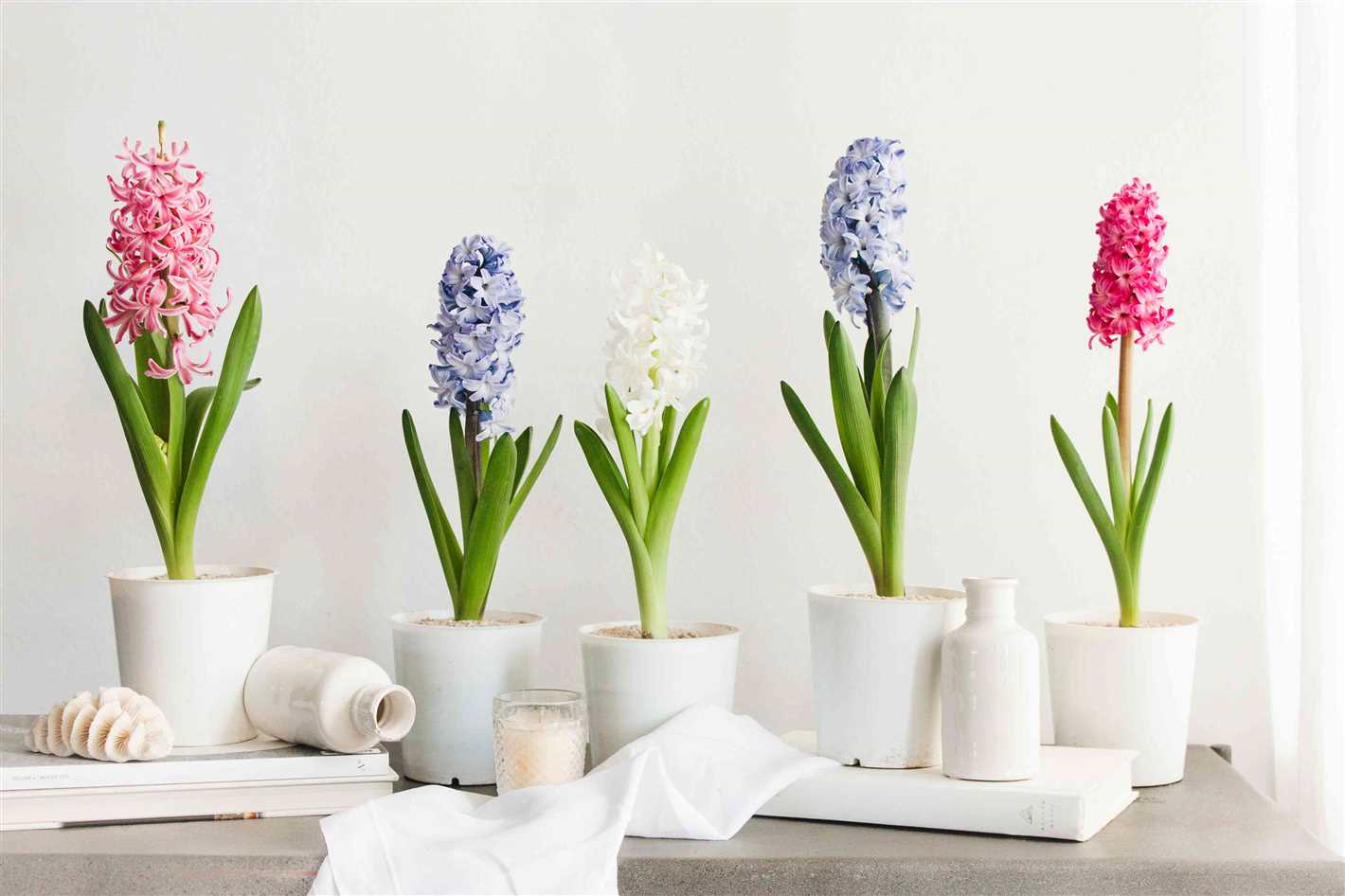

Once the hyacinth bulbs have been cured and dried, they can be stored for the next growing season. Here’s how to store them:
- Remove the dried foliage from the bulbs, cutting it off about an inch above the bulb.
- Inspect the bulbs for any signs of damage or disease. Discard any damaged or diseased bulbs.
- Place the bulbs in a cool, dry and dark location, such as a paper bag or a mesh bag.
- Ensure the bulbs are stored in a place with good air circulation to prevent rot or mold.
- Check the bulbs regularly during the storage period and discard any bulbs that show signs of rot or disease.
By following these harvesting and storing guidelines, you can preserve your hyacinth bulbs and ensure a successful bloom in the next growing season.
Questions and Answers:
What is a hyacinth?
A hyacinth is a bulbous plant that belongs to the genus Hyacinthus. It is known for its fragrant, bell-shaped flowers and is often cultivated for its ornamental value.
How do you grow hyacinths in the garden?
To grow hyacinths in the garden, choose a sunny spot with well-draining soil. Plant the bulbs in the fall, about 4-6 inches deep and 6-8 inches apart. Water regularly, but avoid over-watering. Hyacinths will bloom in the spring and require minimal maintenance.
What are the different types of hyacinths?
There are several types of hyacinths, including Dutch hyacinths, Roman hyacinths, and multiflowering hyacinths. Dutch hyacinths have large flowers and come in various colors. Roman hyacinths have smaller flowers and are usually pale pink or white. Multiflowering hyacinths produce more than one spike of flowers per bulb.
What are some popular hyacinth varieties?
Some popular hyacinth varieties include ‘Blue Jacket’, ‘Woodstock’, ‘Pink Pearl’, and ‘Delft Blue’. ‘Blue Jacket’ is a deep blue variety, ‘Woodstock’ is a dark purple variety, ‘Pink Pearl’ is a pink variety, and ‘Delft Blue’ is a light blue variety.
Can hyacinths be grown indoors?
Yes, hyacinths can be grown indoors. You can force the bulbs to bloom by chilling them in the refrigerator for about 8-10 weeks, and then planting them in pots with well-draining soil. Keep the pots in a cool room for several weeks until the flowers emerge.
How long do hyacinths bloom?
Hyacinths typically bloom for 1-2 weeks, depending on the weather conditions. The flowers are known for their strong fragrance and beautiful colors, making them a popular choice in gardens and floral arrangements.







